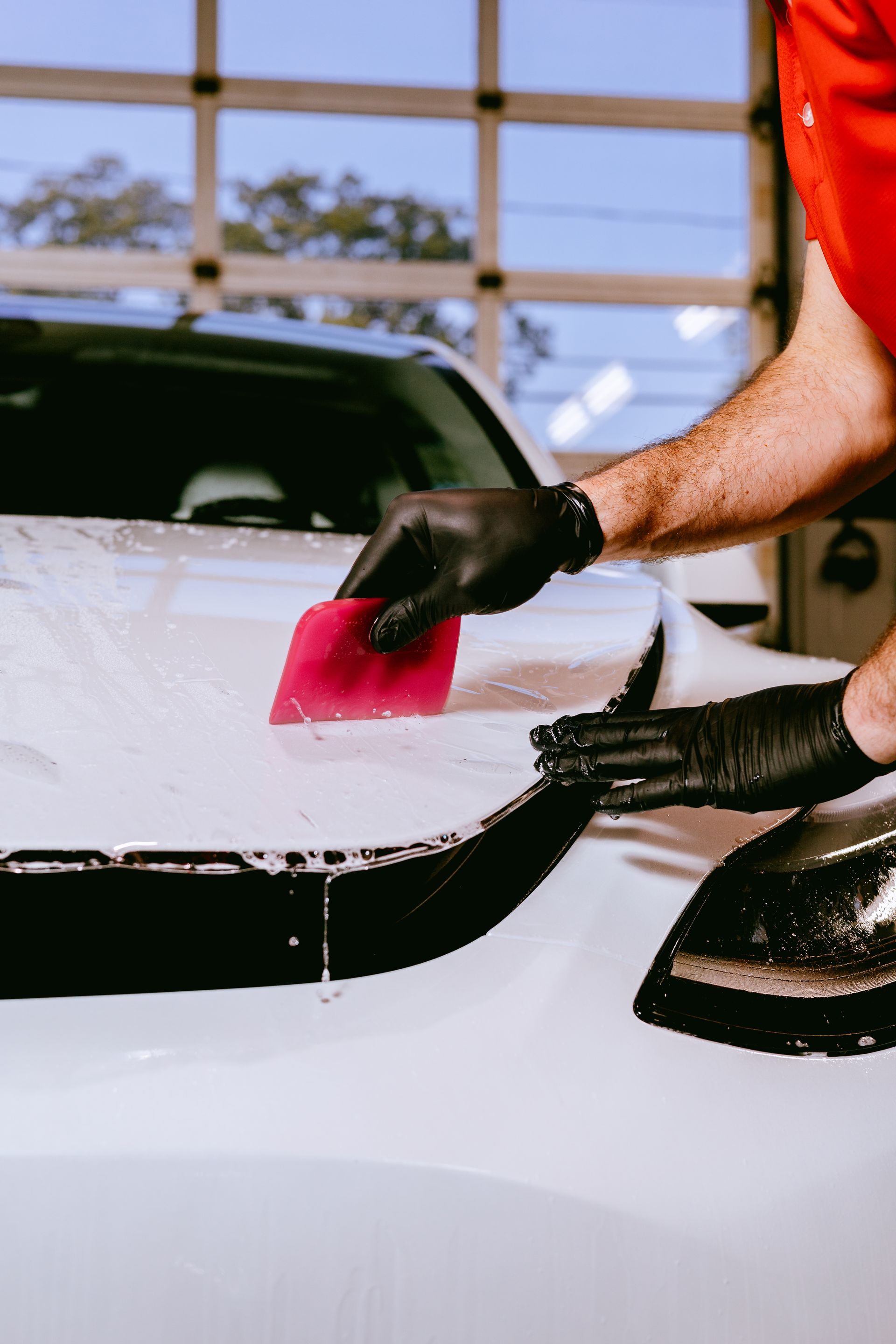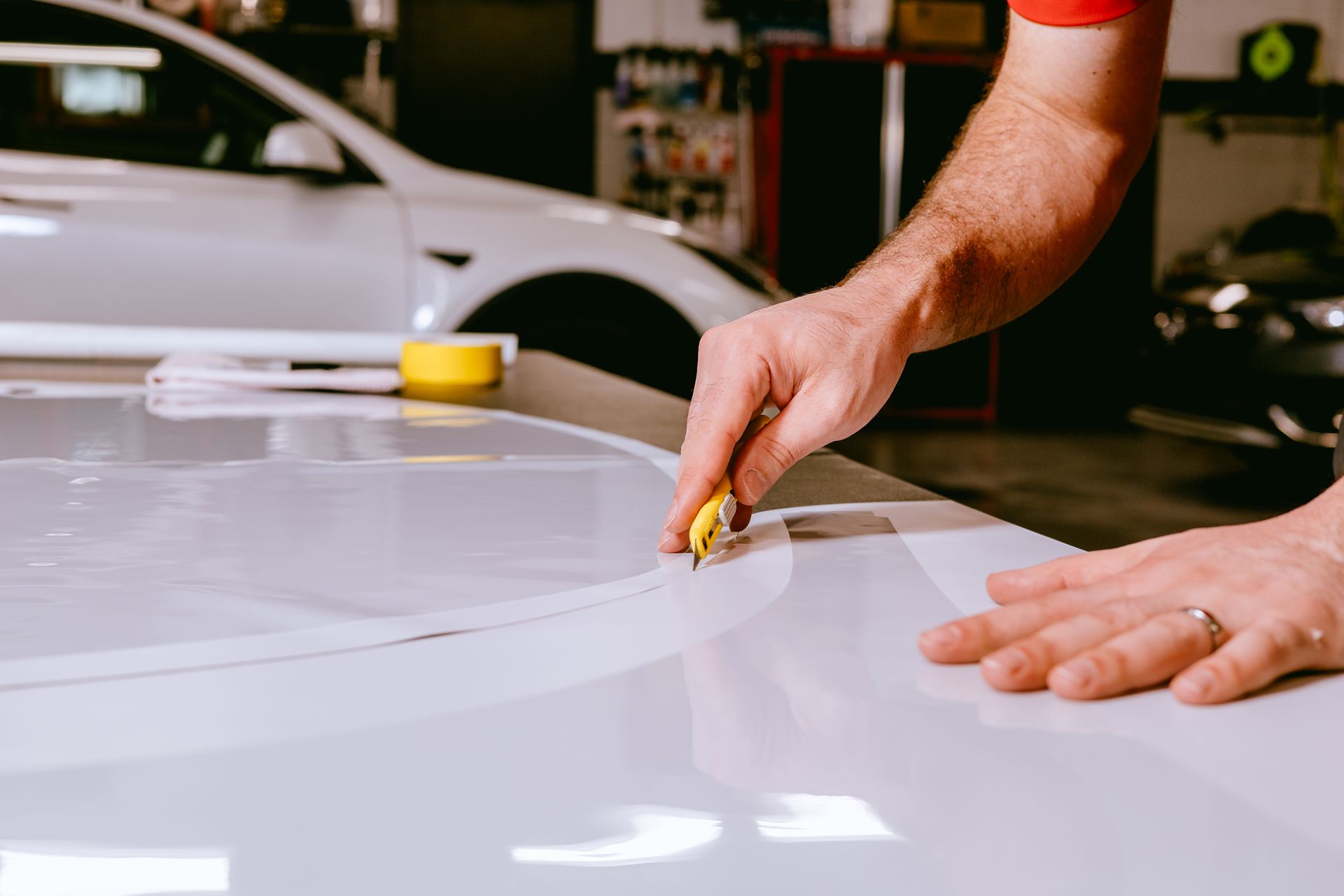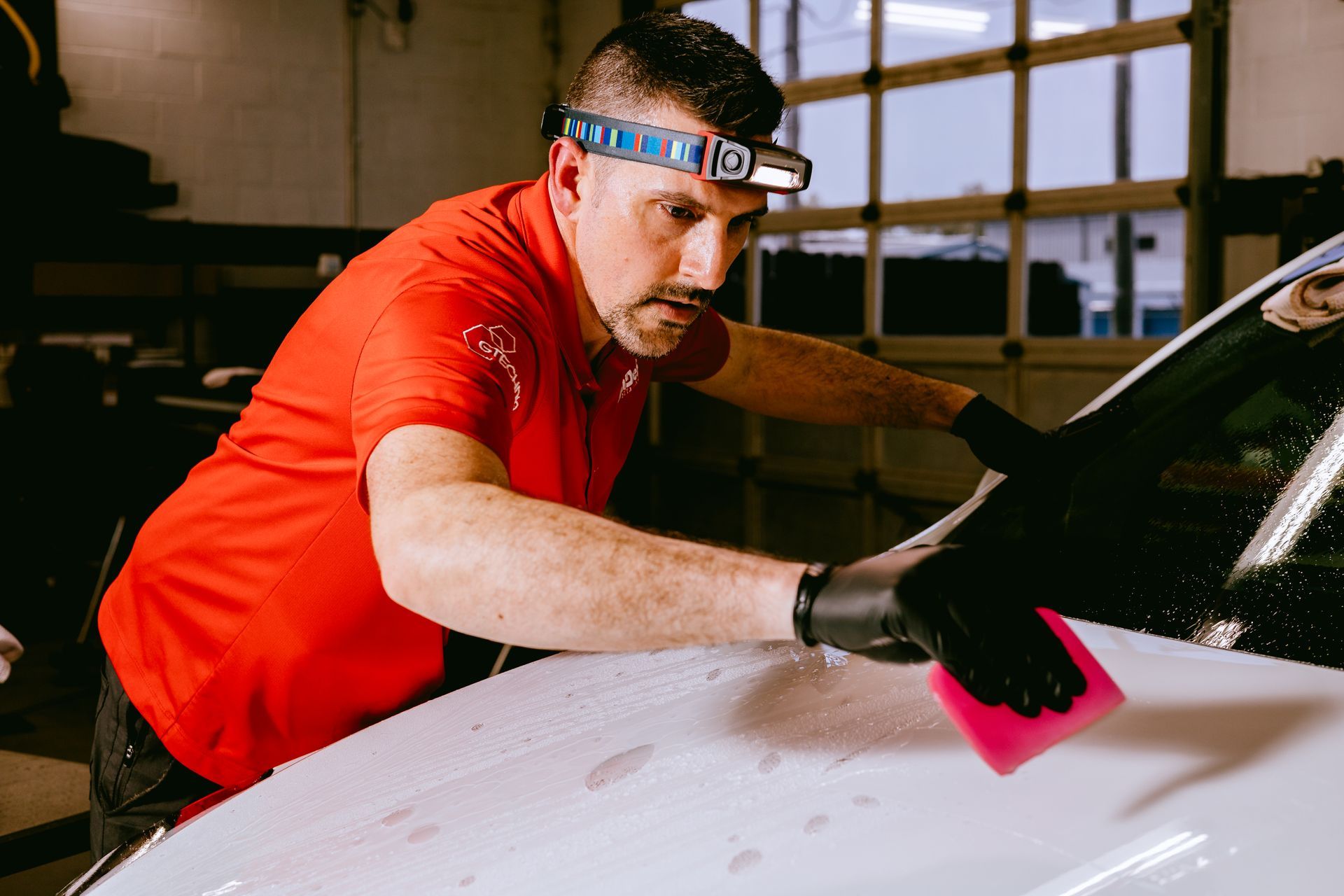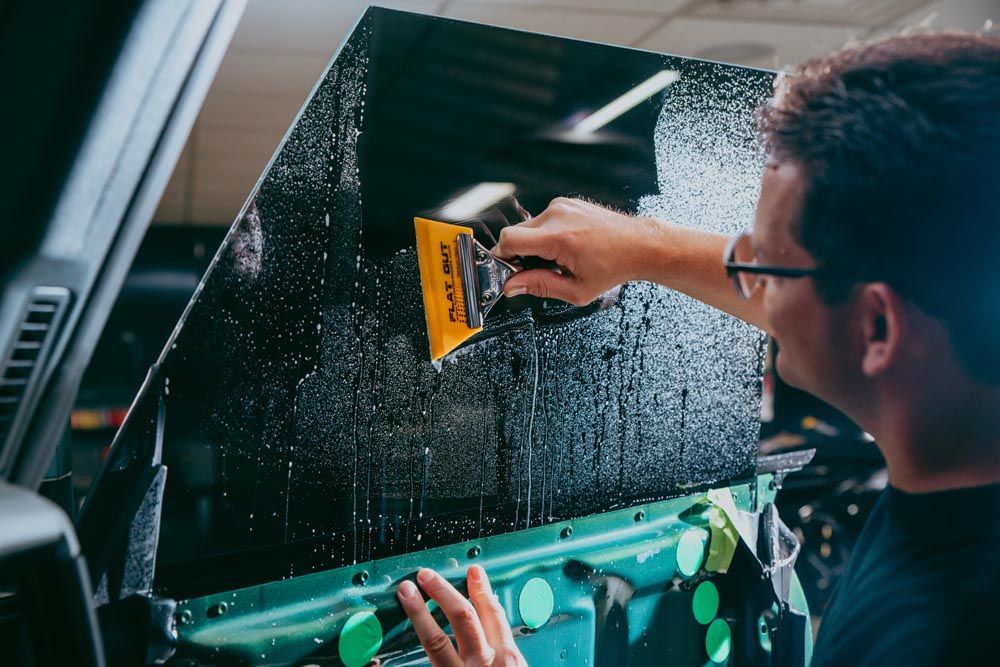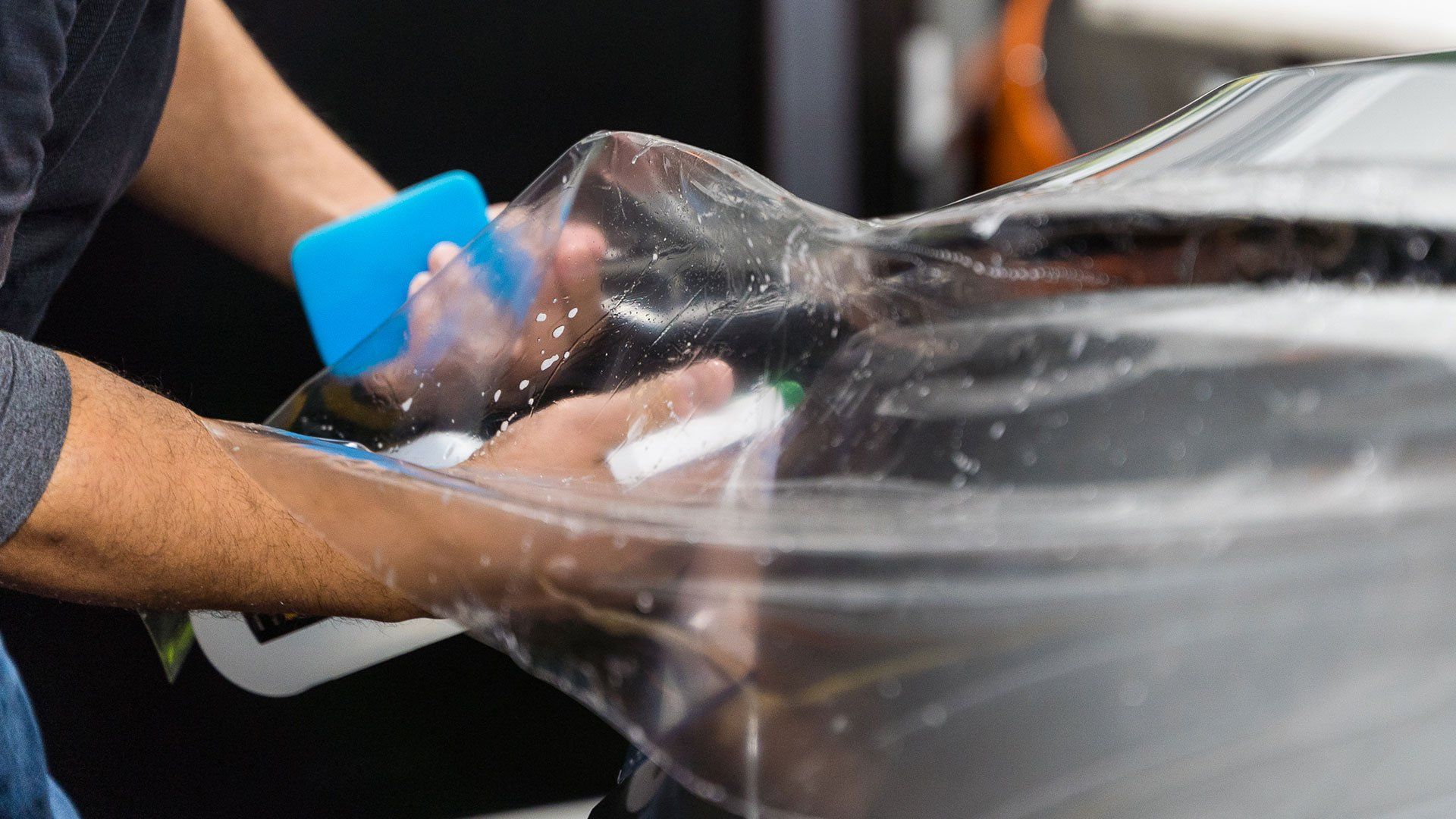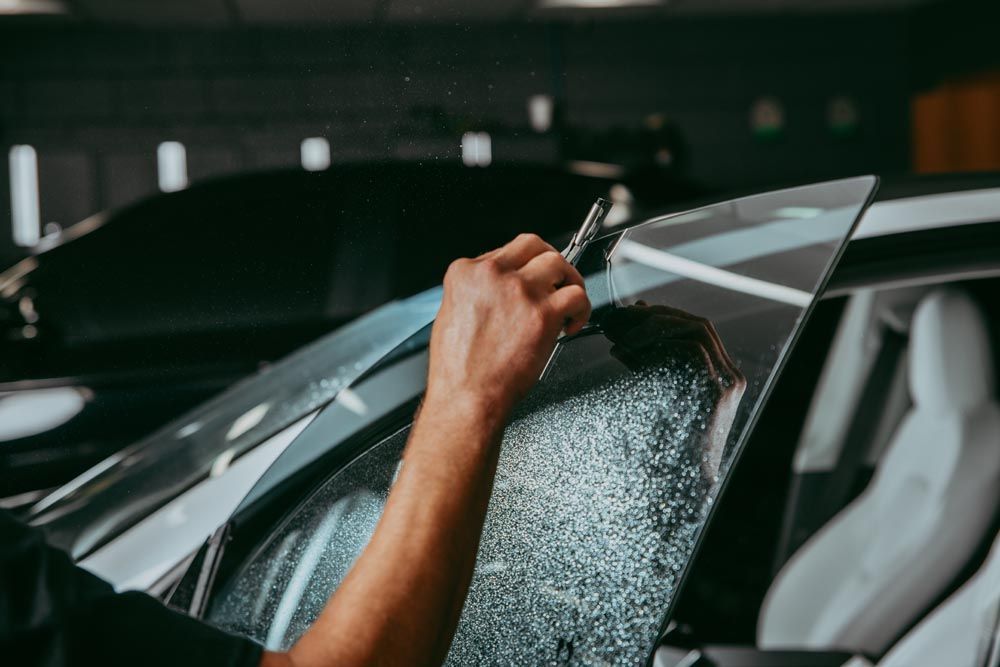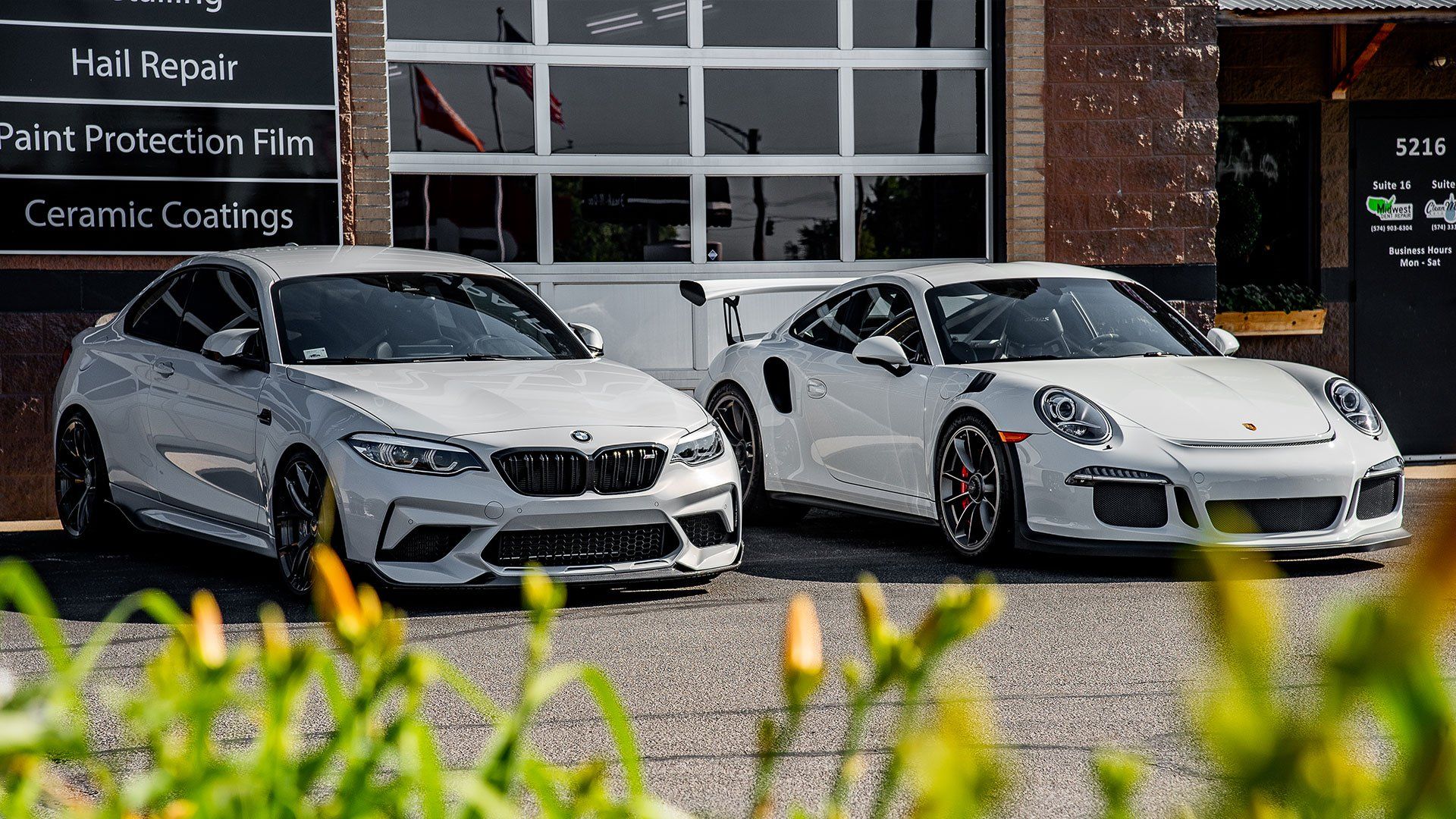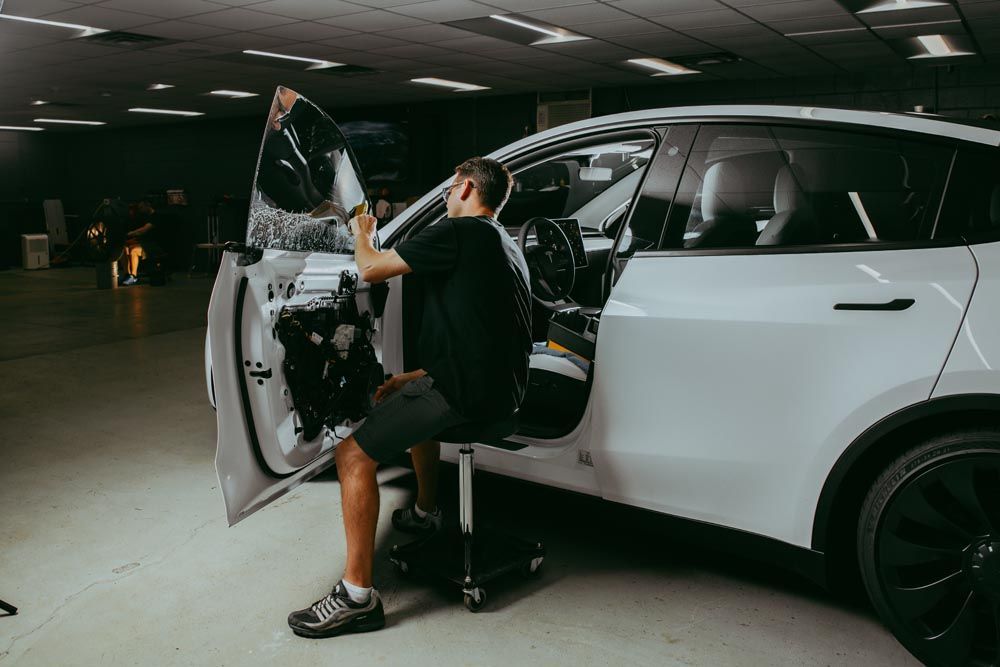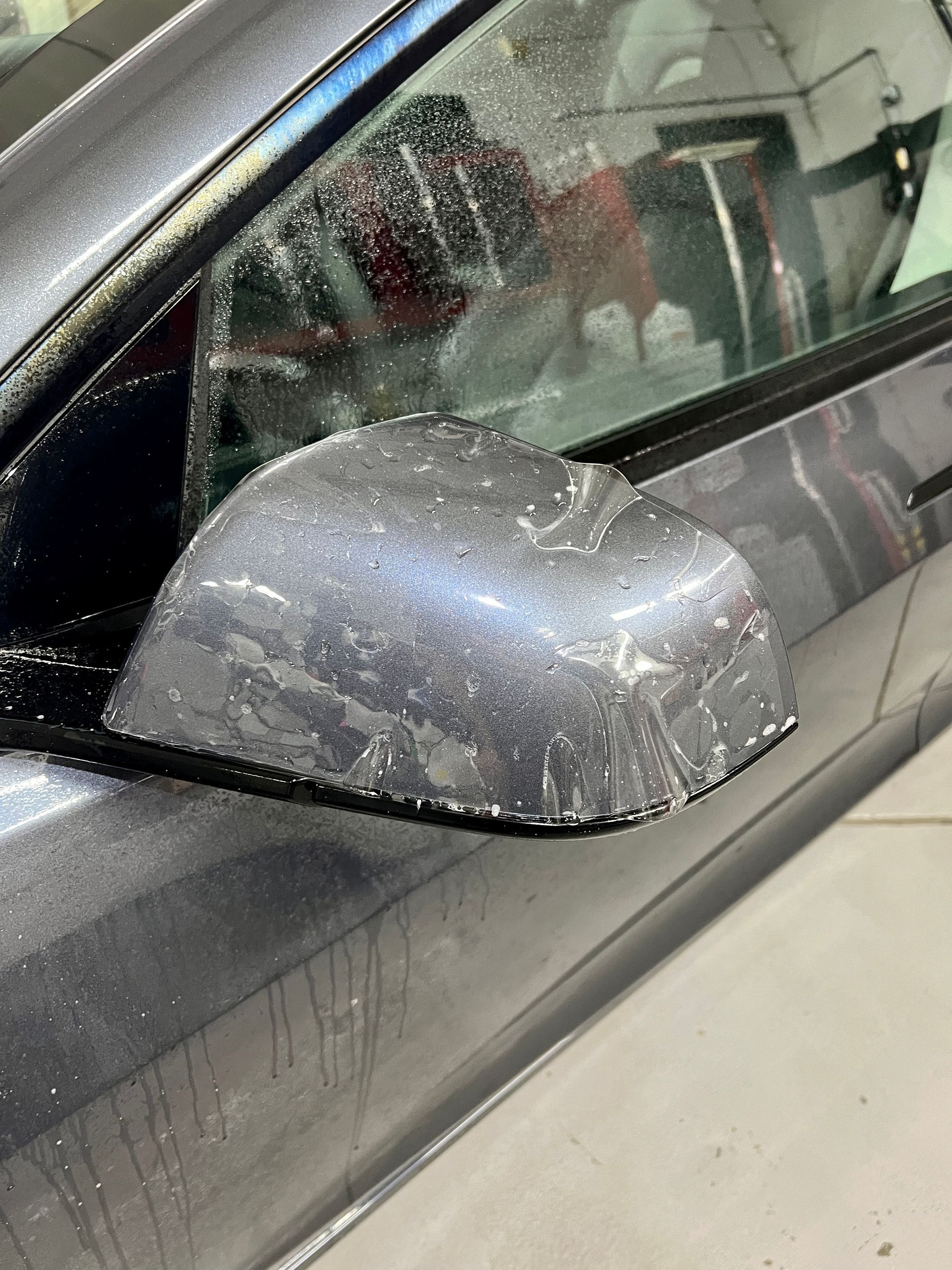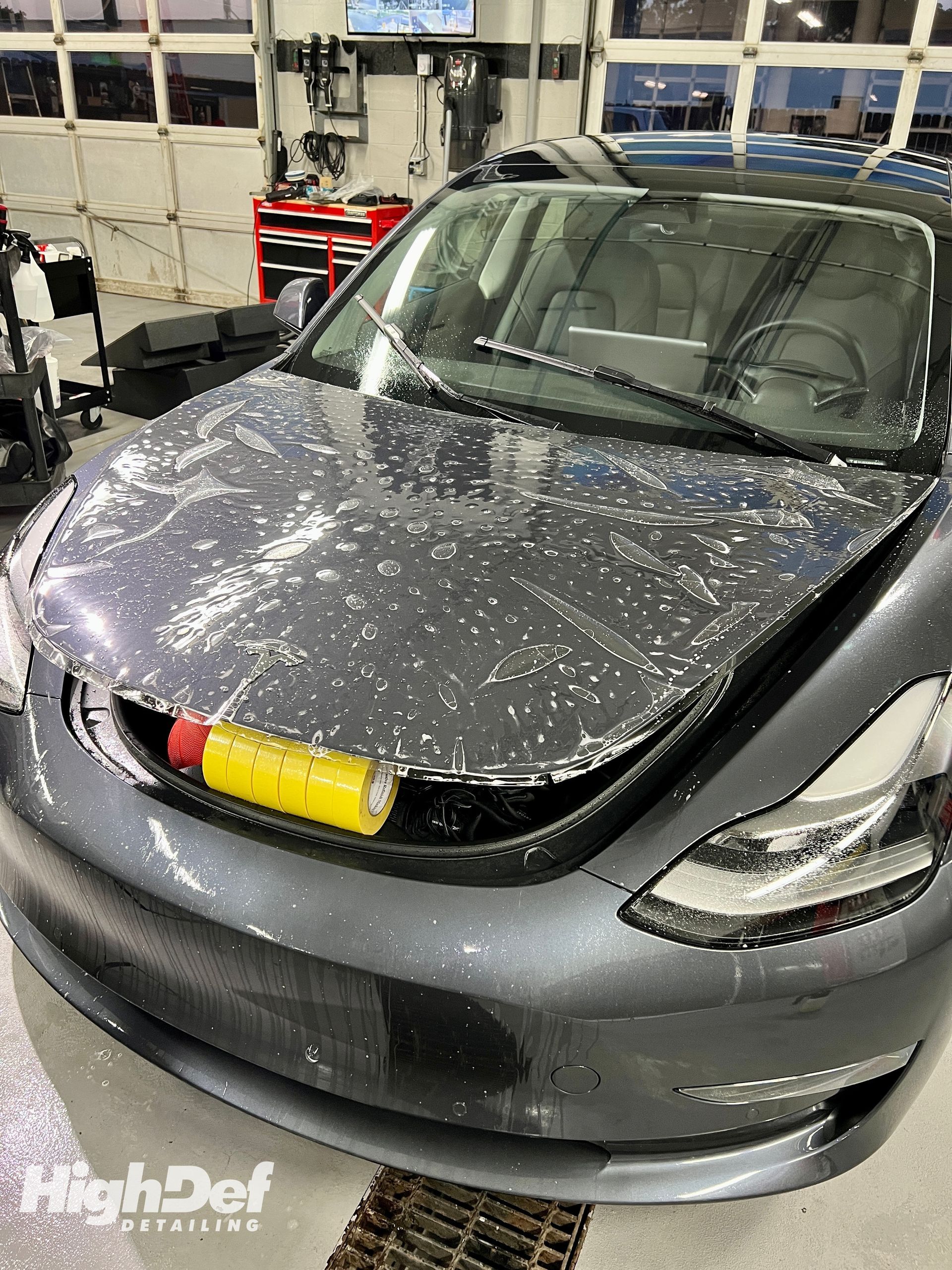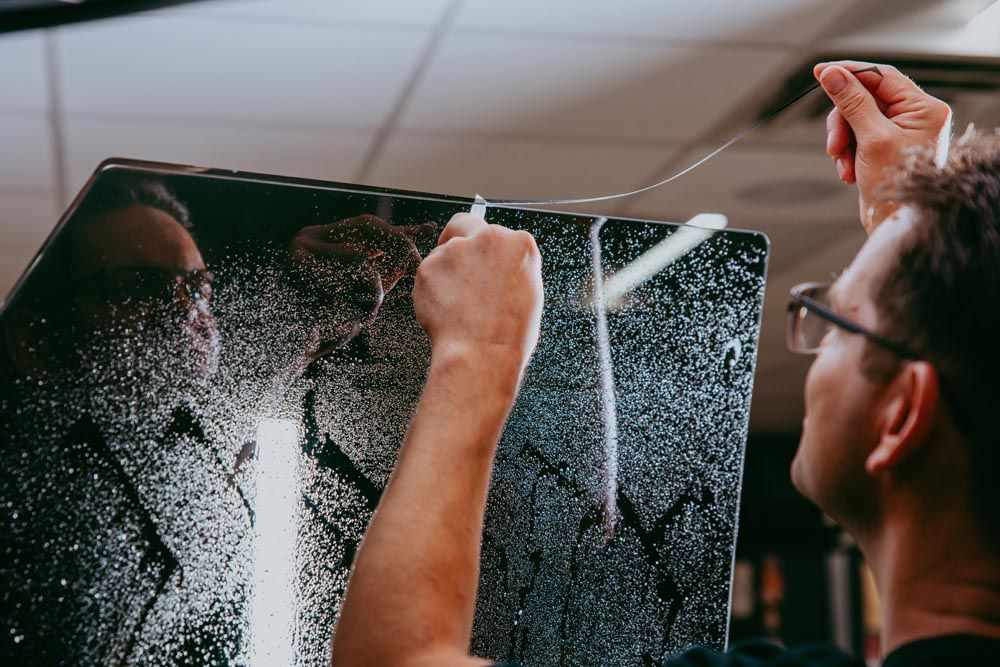The Benefits of Paint Protection Film for Vehicle Owners
Paint protection film serves as a guardian angel for your beloved vehicle. Its sheer presence can fend off damage from pebbles, resist scratches, and shield from harmful environmental elements, keeping your vehicle as fresh-looking as ever. But that's not where its magic ends; thanks to its self-healing properties, minor blemishes won't stand a chance either. Imagine all the minor scuffs your vehicle earns on its daily road trips simply fading away. These features not only maintain the visual appeal of your ride but also enhance its value.
A paint protection film, also known as a clear bra or PPF, offers vehicle owners superior protection against rock chips, scratches, and corrosion, thereby preserving the aesthetic appeal and resale value of their vehicles. Additionally, PPF's self-healing capabilities ensure that minor scratches and scuffs are absorbed, maintaining the car's pristine appearance.
Unveiling Paint Protection Film: A Key Features Overview
Picture this: you're on a long road trip, enjoying the scenic views and the open road. But with road trips come the perils of rock chips, scratches, and other environmental hazards that can damage your vehicle. This is where paint protection film comes in. It acts as a safeguard against these potential damages while preserving the overall aesthetics of your vehicle. Let's dig deeper to understand its key features:
- Transparent Protection: One of the remarkable aspects of PPF is that it's transparent, meaning it offers protection without altering your vehicle's original appearance. Unlike traditional vehicle covers or cumbersome methods like waxing, which can alter the color and sheen of your car, PPF remains virtually invisible once applied. This allows your car's true beauty to shine through while keeping it shielded from harm.
- Self-Healing Properties: Imagine a protective shield that not only defends your car but also has the ability to heal itself—that's PPF for you. Thanks to its self-healing properties, minor scratches and scuffs on the film vanish over time. The thermoplastic urethane material used in paint protection films has a "shape memory" feature that enables it to regain its smooth texture when exposed to heat. This means that those light scratches from road debris or accidental brushes won't be a permanent blemish on your vehicle.
- Durability and Longevity: Another noteworthy feature of a clear bra is its durability. When properly installed and maintained, a paint protection film offers long-term protection for your vehicle's exterior. It provides a robust layer against stone chips, swirling marks, insect acids, bird droppings, and UV exposure. This not only preserves your car's luster but also contributes to maintaining its resale value.
- Customizable Coverage: PPF isn't a one-size-fits-all solution; it offers flexibility in terms of coverage options. Whether you opt for full body protection or partial coverage targeting specific areas prone to damage, such as the hood or fenders, a paint protection film can be tailored to suit your preferences. Additionally, custom patterns can be crafted for a more personalized approach to safeguarding your vehicle.
The Procedure: How PPF is Installed on Vehicles
The installation of paint protection film is a meticulous process that involves several crucial steps to ensure impeccable results. Let’s delve into them:
- Surface Preparation: To begin, the vehicle's surface undergoes a comprehensive cleaning and decontamination process. This entails removing any existing dirt, grime, or residue from the paint. Decontamination ensures that the surface is free from any impurities that could compromise the adhesion of the paint protection film. Any contaminants, such as tar, sap, or industrial fallout, are expertly eradicated to create a smooth and pristine base for the film to adhere to. This step is instrumental in achieving a flawless finish and maximum durability of the protection. The level of thoroughness in surface preparation directly impacts the longevity and effectiveness of the PPF. A smooth surface allows for optimal adhesion and visual appeal.
- Precise Cutting and Application: Once the surface is prepared, the paint protection film is meticulously cut to fit each specific area of the vehicle. Whether it's the hood, fenders, side mirrors, or the entire body, precision cutting ensures that the film fits snugly without excessive overhang or gaps. Each piece of the film is carefully positioned and applied with precision to achieve a seamless and invisible finish. Expert PPF installers utilize specialized cutting tools and techniques to ensure that the film perfectly conforms to the contours of the vehicle's body. This process demands precision and attention to detail to prevent misalignment or unnecessary stretching of the film. Moreover, squeegees are employed to eliminate any air bubbles or imperfections during application, resulting in a smooth, uniform appearance across all sections of the vehicle.
The expertise of professionals in this phase cannot be overstated; their skillful application ensures that the PPF not only offers superior protection but also enhances the aesthetics of the vehicle. Each careful step in this process contributes to creating an unobtrusive yet highly effective shield for your vehicle's paintwork. At every stage, from meticulous cleaning to precise application, the goal remains consistent: to provide maximum protection while enriching and preserving the aesthetic appeal of your vehicle.
Assuring Protection: PPF's Role in Damage Prevention
The primary function of paint protection film is to shield your vehicle from an array of potential damage, offering a robust defense against common hazards encountered on the road. Let's take a closer look at how PPF acts as a protective barrier against specific sources of harm.
Stone Chips and Road Debris
Expanding your car's longevity goes beyond just maintaining its appearance; it's also about preserving its structural integrity. Paint protection film plays a crucial role in safeguarding your vehicle from unsightly chips and dings resulting from rocks, gravel, and other debris encountered during regular usage. This protection is particularly valuable for the lower portions of the vehicle, which are most vulnerable to these hazards. Imagine yourself enjoying the scenery while driving down the highway when suddenly you notice tiny chips and marks on your car's paint due to loose gravel and tiny rocks that other cars have kicked up. These seemingly minor marks can add up to costly repairs if left unattended. PPF acts as an invisible barrier, absorbing the impact of these residues and preventing them from damaging the underlying paint.
Minor Scratches
The wear and tear of everyday use can lead to minor scratches on your vehicle's exterior. This is where paint protection film’s self-healing capabilities come into play. The film can absorb and repair minor scratches, preserving the flawless appearance of your vehicle over time. By maintaining the original factory finish, your clear bra effectively extends the aesthetic lifespan of your car. Picture this: You're parking in a crowded lot, and despite being careful, a stray shopping cart lightly grazes your vehicle, leaving behind a faint scratch. This may seem inconsequential at first but over time, these accumulated scratches can detract from your vehicle's overall appeal. PPF acts as a protective layer, ensuring that such minor blemishes do not compromise the pristine appearance of your car.
Environmental Contaminants
In addition to physical threats, vehicles are also exposed to environmental contaminants such as bird droppings, tree sap, and acid rain, all of which can cause etching and discoloration of the paint. A paint protection film functions as a barrier against these elements, ensuring that they do not compromise the quality of your vehicle’s exterior. Consider the aftermath of parking under a tree only to discover patches of sticky tree sap marring your car’s surface. If left unaddressed, these substances can eat away at the paint finish over time. The application of PPF creates an impermeable shield, mitigating the impact of such environmental contaminants and protecting the underlying paintwork.
By acting as an effective barrier against various types of damage, including stone chips, road debris, minor scratches, and environmental contaminants, PPF serves as an invaluable investment in preserving the aesthetic appeal and structural integrity of your vehicle.
Safeguarding from Sun Rays and Environmental Particles
When you're out on the road, your car is constantly exposed to the sun's powerful ultraviolet (UV) rays. Over time, this exposure can cause your car's paint to fade and lose its luster. Paint protection film is a reliable guardian that effectively shields your vehicle from the detrimental effects of prolonged sun exposure. PPF has the remarkable ability to absorb and disperse harmful UV radiation before it reaches your car's paint. It provides up to 99% UV protection, significantly reducing the impact of these damaging rays. By creating a protective barrier against UV rays, paint protection film helps preserve the original vibrancy and color intensity of your car's paint for much longer. Imagine PPF as a shield that not only reflects but also absorbs harmful UV rays, allowing your car's paint job to stay fresh and vibrant even after years of sun exposure.
Environmental Particles: Armor Against Airborne Contaminants
Every time you hit the road, your vehicle faces a constant barrage of airborne contaminants such as dust, dirt, pollutants, and chemicals. These particles can wreak havoc on your car's paint over time, leading to corrosion and degradation. Fortunately, paint protection film acts as an impenetrable shield against these environmental hazards. By forming a robust barrier between your car's exterior and these harmful airborne elements, PPF prevents them from adhering to the surface and causing damage. This means that your car's paint stays protected from chemical deterioration and environmental harm, preserving its sheen and longevity.
So, with a paint protection film acting as a reliable guardian, you can rest assured knowing that your vehicle's exterior remains safeguarded from the harsh impact of environmental elements. Given its impressive ability to defend against both UV rays and airborne pollutants, there's no doubt that PPF plays a pivotal role in preserving the pristine appearance and structural integrity of your vehicle over time.
How PPF Impacts Your Vehicle's Long-Term Value
You might not think about your car as an investment in the traditional sense. But when it comes to maintaining its value, every decision you make affects your car's long-term worth. It's like looking after a high-value possession, just like a piece of fine art or antique furniture. Picture this: You've invested in a stunning sports car or a luxurious family vehicle. Naturally, you'd want to keep it in top-notch condition for as long as possible to ensure that it retains its value. This is where paint protection film comes into play. By preserving your car's original paintwork, PPF ensures that it remains in pristine condition over time, shielding it from sun damage, stone chips, and other environmental hazards that could otherwise mar its appearance.
According to automotive experts, maintaining your car's exterior with PPF can increase its resale value by up to 10%. Just imagine a simple protective film having the potential to positively impact the money you'd get back when it's time to part with your vehicle. It's quite the return on investment for a product designed to shield and preserve. To put this in perspective, by spending a few hundred dollars on PPF installation, you could potentially see a substantial return when you decide to sell your vehicle. Ultimately, protecting your car with PPF isn't just about maintaining its aesthetics; it's also a smart financial choice that can yield tangible returns down the line. It safeguards the beauty and integrity of your vehicle while boosting its financial appeal in the eyes of future buyers.
Leading Paint Protection Film Solutions in Elkhart, IN
Discover the ultimate shield for your vehicle at High-Def Detailing in Elkhart, IN. Unveil a new era of protection with our cutting-edge paint protection film solutions, meticulously crafted to safeguard your vehicle's pristine finish against the harsh elements of the road. Elevate your driving experience by entrusting us with the task of preserving the beauty of your investment. Our expert team at High-Def Detailing is dedicated to providing unparalleled care and top-notch service for every vehicle that graces our facility. Say goodbye to worries about road debris, rock chips, and environmental contaminants, and embrace the confidence that comes with a flawlessly protected ride. Secure your vehicle's future today with High-Def Detailing, where excellence meets automotive preservation. Call us at
(574) 333-9976!
